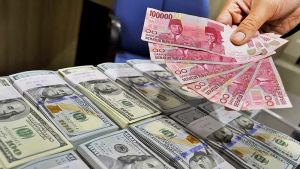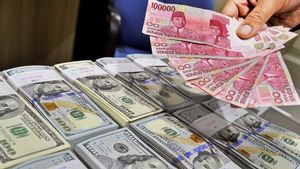YOGYAKARTA People who become bank customers certainly know about bank interest. In the banking world, there are various types of bank interest rates that must be known. The following article will provide information to the public to better recognize the understanding of the types of bank interest rates.
In the Big Indonesian Dictionary (KBBI), bank interest rates are interest rates or rates imposed by banks on money loan activities in banks.
Quoting the official website of the Financial Services Authority (OJK), interest rates are simply interpreted as services from banks to customers who sell or buy banking products. In addition, bank interest can also be interpreted as a price that must be paid by banks to customers who have savings in banks, and a price that must be paid by customers to banks if the customer gets a loan facility or bank credit.
In the banking world, there are 5 bank interest rates, namely as follows.
Fixed interest rates are interest rates whose numbers are fixed. This means that interest rates do not change for a certain period of time or until the maturity date (during the credit period). Interest rates are usually given in several cases, for example in the activities of KPR Cheap Houses or Subsidized Houses.
For example, the fixed interest rate, the Ambassador bought Mio's motorbike on credit within 24 months. He is required to pay installment fees as well as a fixed interest rate. The interest rate is still the same, from the first month to the 12th month.
Unlike the fixed interest rate, floating interest rates will continue to change according to the interest rates on the market. When there is an increase in interest rates in the market, the floating imposed on customers will also increase. This applies the opposite way.
For example, a floating interest rate, Ave applies for a home loan. Every month he has to pay Rp. 500 thousand which consists of installments + loan interest costs. However, this figure can go up or down, depending on the interest rate in the market.
The flat interest rate is the interest rate, which is calculated from the principal amount of the loan at the beginning for each installment period.
Flat interest rates are calculated based on the principal amount of the loan that has been set at the initial part during the installment period. Calculations of flat interest rates are very simple, so they are often applied to credit for a short period of time. Flat term formulas are (Lending point x interest rate Total credit time): the total credit time month.
另请阅读:
For example, a flat interest rate, Alfi borrowed Rp. 10 million for 1 year (12 months). While the interest rate applied is 10% in 1 year. So the calculation is as follows.
The effective interest rate is calculated from the remaining amount of loan principal per month which continues to be shrinking along with debts that have been paid in the previous months.
An example of an effective interest rate, the interest rate that must be paid in the first month is IDR 3 million. Meanwhile, the interest paid in the second month is IDR 2.9 million. The interest will continue to shrink until the loan is complete.
This type of interest rate usually helps ease investor burdens in returning capital to banks. The interest that must be paid by borrowers at the beginning is very large, while the principal installments are small. When the credit period begins to close at the end, the principal installments will be very large, and the interest portion will shrink.
That's information about the type of bank interest rate. Visit VOI.ID to get other interesting information.
The English, Chinese, Japanese, Arabic, and French versions are automatically generated by the AI. So there may still be inaccuracies in translating, please always see Indonesian as our main language. (system supported by DigitalSiber.id)
















